I have been using the SAS type smock for a couple decades, and although I haven’t changed much in the way it is stocked, there have been changes over the years. What is in the smock changes, but what that gear is supposed to do has not. A piece of clothing such as a smock will carry A LOT of gear, and the key is to have enough to survive, but don’t load it down.
First let’s talk about the smock I now use and recommend. I used to recommend the smock made by Begadi, but unfortunately it is no longer made, and was extremely expensive (about $150). The smock I’ve been using is not only cheaper (about $80 and that includes shipping from Germany), I like some of the features better. It is sold by ASMC, and the smock link is here.
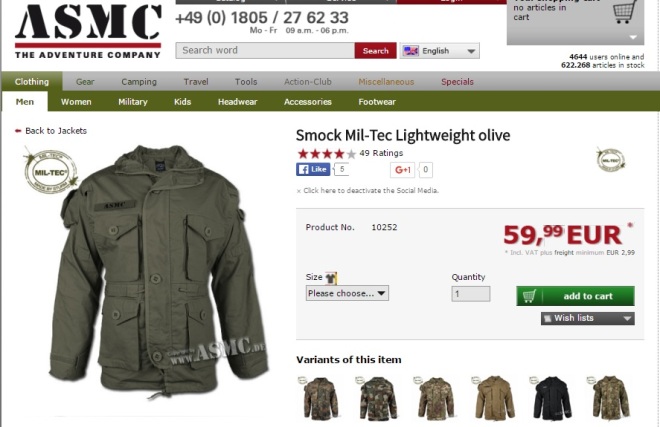
Take note, it comes in a number of colors and camo patterns.
The smock is made out of 65/35 Poly/cotton ripstop, which means it dries pretty fast, but does not have some of the drawbacks of all nylon clothing (human torch anyone). The shoulders and elbows have a heavier, cordura like, water repellent fabric covering them, and the elbows come with removable elbow pads.
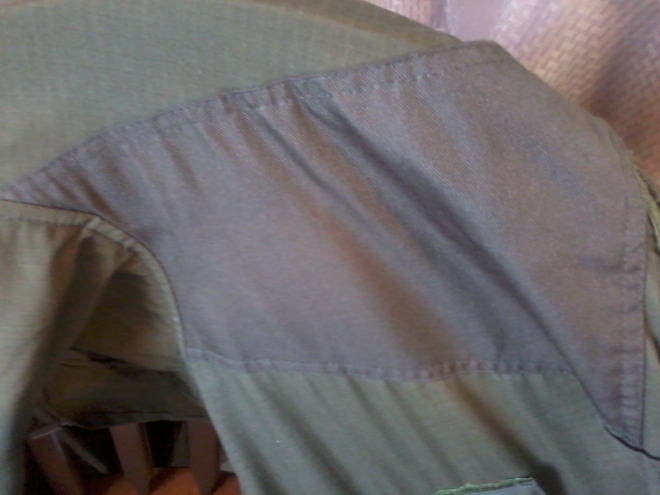
Re-enforced shoulder patch
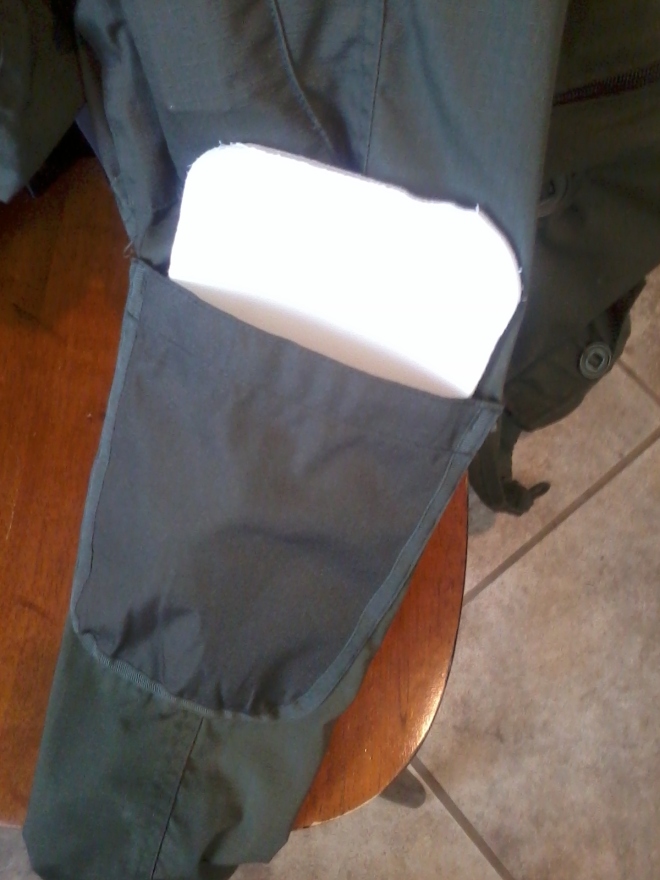
Re-enforced elbow patch with removable pad. I removed mine, it gives you more freedom of movement.
The hood has a few feature which I really like. One id the adjustment in the back which will keep the front of the hood from obstructing your peripheral vision. The second is the wire that can be shaped to keep the sides back, also helping with your peripheral vision, and the hood doesn’t hanging down in your face.
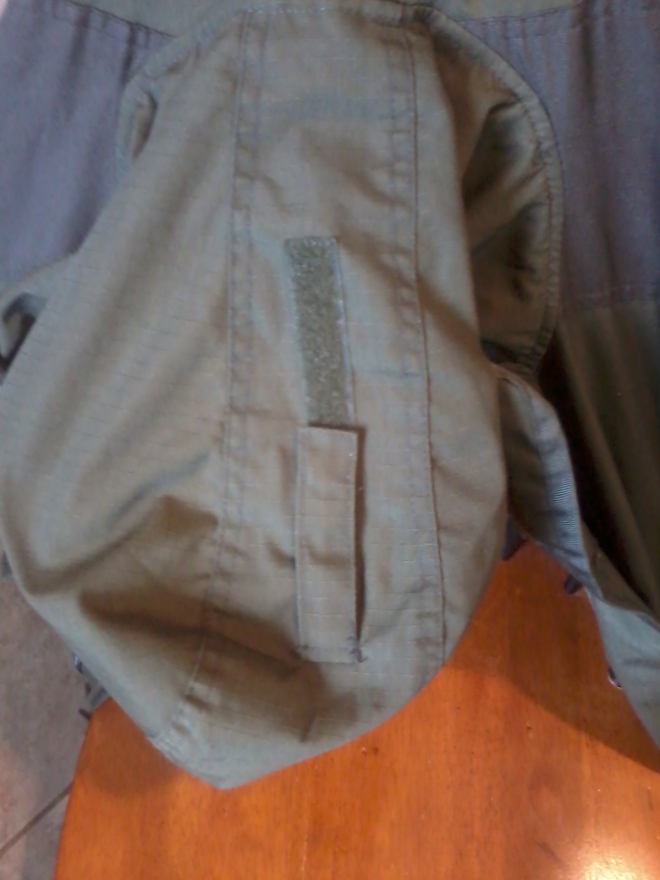
This is looking at it with the top of the hood at the bottom. The adjustment tab is in the middle.
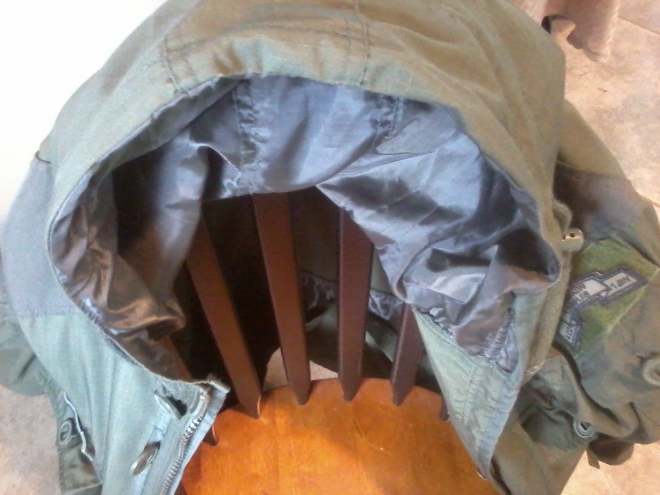
The wire in the hood keeps the hood open, and not obstructing your view.
If you buy one of these smocks, be careful how what size you get. If you are getting it as an everyday coat, do as the company suggests, and get a size smaller than you normally do. If you are getting it as a field smock, with the possibility of wearing insulating layers under it, get the size you normally would. A friend recently found that out, as he ordered one size smaller, and found out wearing a field jacket liner of heavy fleece significantly inhibited his freedom of movement.
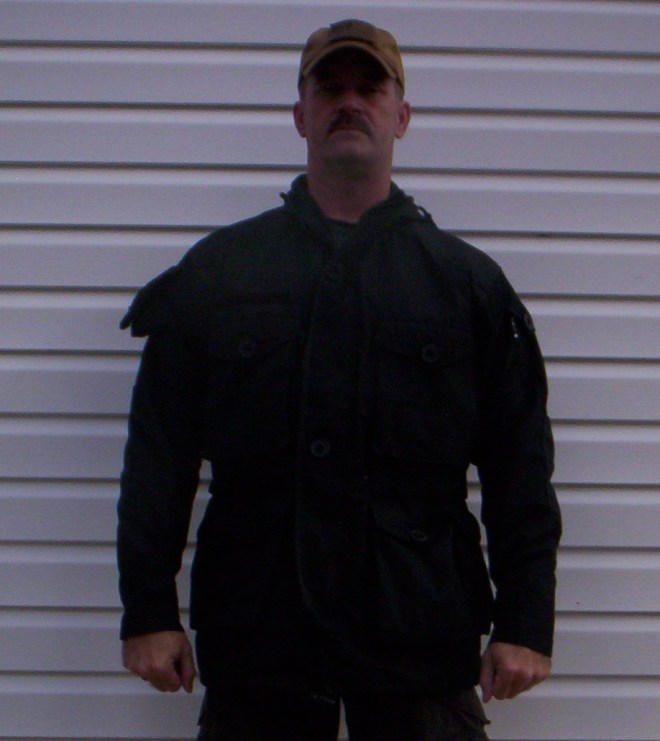
This black smock was bought as an everyday jacket, and a heavy fleece will fit under it, but it does not have the freedom of movement that I would want in a field smock.
The liner in the smock (where there is one), is not the heavy liner you would expect and nothing like a US Army field jacket has. The smock is lightweight enough to be worn in warmer weather, and has large “Pit zips” to help vent, as well as only buttoning the front (instead of zipping it up) of the smock helps with the airflow issues you might have. The “Canadian style” buttons are great when you are trying to button or unbutton with gloves on.

The “Canadian style” buttons are attached on a slider and are very robust. NOTE: My Buddy Bergmann advised that the sliders are one of the places you might want to re-enforce with a couple extra runs of thread.
One of the only things I do not like on this smock is the right sleeve pocket. I believe it is designed for some type of first aid dressing, but is ridiculously large, and I’ve dealt with it in two ways. On my OD smock, I removed it and covered the area with a velcro panel. On my flectarn smock (it is my regular hunting jacket), I sewed the sides of the pocket down. This allows me to still used the pocket, but it has less volume, and sticks out a lot less.
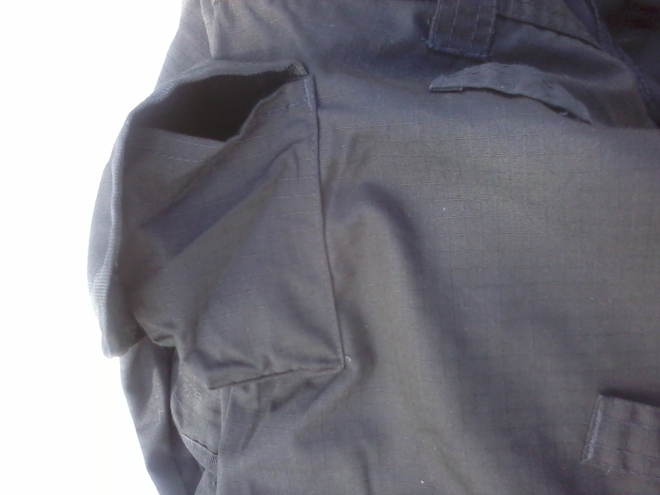
Size of the right sleeve pocket before sewing.
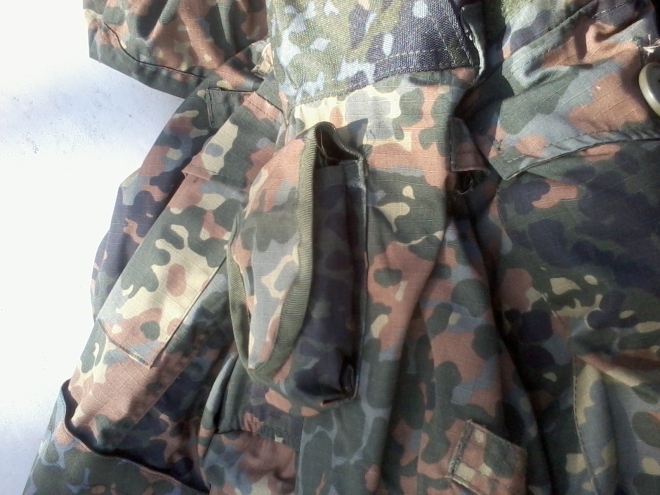
Size of the pocket after it has been sewed down.
Cuff adjustments are velcro, waist adjustments are of the string type (ala army field jacket), and it also has a skirt tie for when the wind is really bad. You’ll notice in some of the pics that their are fabric tabs all over the smock. This is a way to secure camouflage (natural or man made) to the smock for obvious reasons.
Overall, it is a great lightweight, multi purpose jacket, and except for the things mentioned, I have nothing but good to say about this as all around field apparel.In part two, we’ll talk about the survival kit I carry in it.
JCD
American by BIRTH, Infidel by CHOICE


I’ve got a few British wind proof smocks that I love. Going to have to check these out too.
Pingback: Revisiting The Smock, And Stocking It For Survival PT. 2 | Prepper's Survival Homestead
JCD, your thoughts on the olive versus flecktran for what I’ll call multi season use, except when there is heavy snow cover. I’m northeast of your AO, SE PA (Bucks) but pretty much the same/similar environment throughout the year and would like to hear your experience with solid olive in the late fall /
If given the choice, I’d choose OD. I like flechtarn for hunting through most of the hunting season, but for a Fall through Spring color scheme, OD blends in better all the way around. Since OD is not as popular as camo with many preparedness types, I bought one for each member of my immediate family. It can be used for identification, and it is still a popular color in the civilian world (My Daughter came home from Holister with a jacket that is the spitting image of my old military OD green field jacket. The only difference was the fabric and quality was not up to the mil standard. If you have a pair of civvy looking cargo pants in your ruck, and can remove all patches from your coat, you’d blend right in.
Pingback: MDT: Revisiting The Smock, And Stocking It For Survival | Western Rifle Shooters Association
Good piece of field clothing. You can find DPM and occasionally MTP (Brit Multicam) smocks at army surplus stores for $20-$30 each, if you have a decent old-school place nearby.
If someone came across a (repro) original Dennison Pattern in an American size Large equivalent, and wanted to attend a workshop, I’d definitely take it in trade.
Do you feel the miltec will hold up in the long run?
Sure do.
Pingback: Typical Combat Uniform Fabrics: A Flammability Test | Prepper's Survival Homestead
Reblogged this on disturbeddeputy.
Pingback: Revisiting The Smock, And Stocking It For Survival PT. 1 | Rifleman III Journal